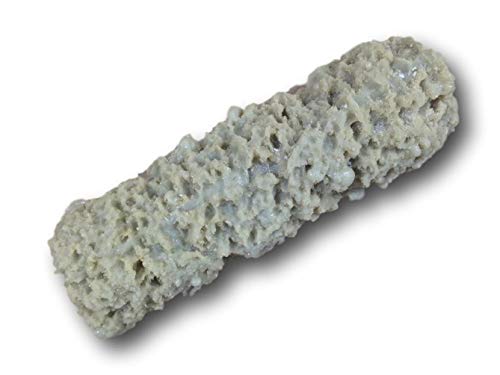Surg Obes Relat Dis. 2013 Jul 18. pii: S1550-7289(13)00234-7. doi: 10.1016/j.soard.2013.07.007. [Epub ahead of print]
Antidiabetic efficacy of obesity surgery in Germany: A quality assurance nationwide survey.
Weiner R1, El-Sayes I, Manger T, Weiner S, Lippert H, Stroh C; Obesity Surgery Working Group, Competence Network Obesity.
Author information
Abstract
BACKGROUND:
Obesity and diabetes usually co-exist. Obesity surgery seems to offer solutions for both. The objective of this study was to show the effect of obesity surgery on the diabetic profile.
METHODS:
Data on obesity surgery in Germany (2005-2011) were collected from the Institute of Quality Assurance at the research university. Follow-up of the diabetic profile at 1, 2, and up to 6 years after surgery was done.
RESULTS:
Among 17,670 patients, 5,506 (31.2%) were diabetics. Follow-up was accomplished in 87.4%, 82.5%, and 68.9% of eligible patients at 1, 2, and up to 6 years, respectively, after surgery. Of the study participants, 38.2% were insulin-treated (IT) patients and 61.8% were noninsulin-treated patients (NIT). Of the patients' procedures, 2878 (52.3%) Roux-en-Y gastric bypasses (RYGB), 1711 (31.1%) sleeve gastrectomies (SG), 679 (12.3%) laparoscopic adjustable gastric bands (LAGB), 165 (3%) biliopancreatic diversions with duodenal switch (BPD/DS), and 68 (1.3%) biliopancreatic diversions (BPD) were performed. Female gender percentage and mean body mass index (BMI) were significantly higher in the RYGB and LAGB groups. Mean age was significantly higher in BPD/DS group. At 1 year, remission/improvement (RI) percentage was 83.5%, 82.5%, 67.8%, 93.4%, and 84.8% after RYGB, SG, LAGB, BPD, and BPD/DS, respectively. At 2 years, RI% was 84.9%, 79.5%, 67.7%, 94.5%, and 90.9% after RYGB, SG, LAGB, BPD, and BPD/DS, respectively. At late follow-up, RI% was 83.2%, 59.5%, 58.9%, 100%, and 86.4% after RYGB, SG, LAGB, BPD, and BPD/DS, respectively. IT patients showed insignificantly higher RI% than NIT patients at all follow-up points. Malabsorptive procedures (RYGB, BPD, and BPD/DS) showed a significantly higher RI% than restrictive procedures (LAGB and SG) at late follow-up.
CONCLUSION:
Obesity surgery has promising antidiabetic efficacy, especially in IT patients. Malabsorptive procedures show higher, gradually descending, but durable antidiabetic efficacy.
Let's make that easier to read:
At 1 year, remission/improvement (RI) percentage was
83.5%, 82.5%, 67.8%, 93.4%, and 84.8% after
RYGB, SG, LAGB, BPD, and BPD/DS, respectively.
At 2 years, RI% was
84.9%, 79.5%, 67.7%, 94.5%, and 90.9% after
RYGB, SG, LAGB, BPD, and BPD/DS, respectively.
At late follow-up, RI% was
83.2%, 59.5%, 58.9%, 100%, and 86.4% after
RYGB, SG, LAGB, BPD, and BPD/DS, respectively.
Antidiabetic efficacy of obesity surgery in Germany: A quality assurance nationwide survey.
Weiner R1, El-Sayes I, Manger T, Weiner S, Lippert H, Stroh C; Obesity Surgery Working Group, Competence Network Obesity.
Author information
Abstract
BACKGROUND:
Obesity and diabetes usually co-exist. Obesity surgery seems to offer solutions for both. The objective of this study was to show the effect of obesity surgery on the diabetic profile.
METHODS:
Data on obesity surgery in Germany (2005-2011) were collected from the Institute of Quality Assurance at the research university. Follow-up of the diabetic profile at 1, 2, and up to 6 years after surgery was done.
RESULTS:
Among 17,670 patients, 5,506 (31.2%) were diabetics. Follow-up was accomplished in 87.4%, 82.5%, and 68.9% of eligible patients at 1, 2, and up to 6 years, respectively, after surgery. Of the study participants, 38.2% were insulin-treated (IT) patients and 61.8% were noninsulin-treated patients (NIT). Of the patients' procedures, 2878 (52.3%) Roux-en-Y gastric bypasses (RYGB), 1711 (31.1%) sleeve gastrectomies (SG), 679 (12.3%) laparoscopic adjustable gastric bands (LAGB), 165 (3%) biliopancreatic diversions with duodenal switch (BPD/DS), and 68 (1.3%) biliopancreatic diversions (BPD) were performed. Female gender percentage and mean body mass index (BMI) were significantly higher in the RYGB and LAGB groups. Mean age was significantly higher in BPD/DS group. At 1 year, remission/improvement (RI) percentage was 83.5%, 82.5%, 67.8%, 93.4%, and 84.8% after RYGB, SG, LAGB, BPD, and BPD/DS, respectively. At 2 years, RI% was 84.9%, 79.5%, 67.7%, 94.5%, and 90.9% after RYGB, SG, LAGB, BPD, and BPD/DS, respectively. At late follow-up, RI% was 83.2%, 59.5%, 58.9%, 100%, and 86.4% after RYGB, SG, LAGB, BPD, and BPD/DS, respectively. IT patients showed insignificantly higher RI% than NIT patients at all follow-up points. Malabsorptive procedures (RYGB, BPD, and BPD/DS) showed a significantly higher RI% than restrictive procedures (LAGB and SG) at late follow-up.
CONCLUSION:
Obesity surgery has promising antidiabetic efficacy, especially in IT patients. Malabsorptive procedures show higher, gradually descending, but durable antidiabetic efficacy.
Let's make that easier to read:
At 1 year, remission/improvement (RI) percentage was
83.5%, 82.5%, 67.8%, 93.4%, and 84.8% after
RYGB, SG, LAGB, BPD, and BPD/DS, respectively.
At 2 years, RI% was
84.9%, 79.5%, 67.7%, 94.5%, and 90.9% after
RYGB, SG, LAGB, BPD, and BPD/DS, respectively.
At late follow-up, RI% was
83.2%, 59.5%, 58.9%, 100%, and 86.4% after
RYGB, SG, LAGB, BPD, and BPD/DS, respectively.

































